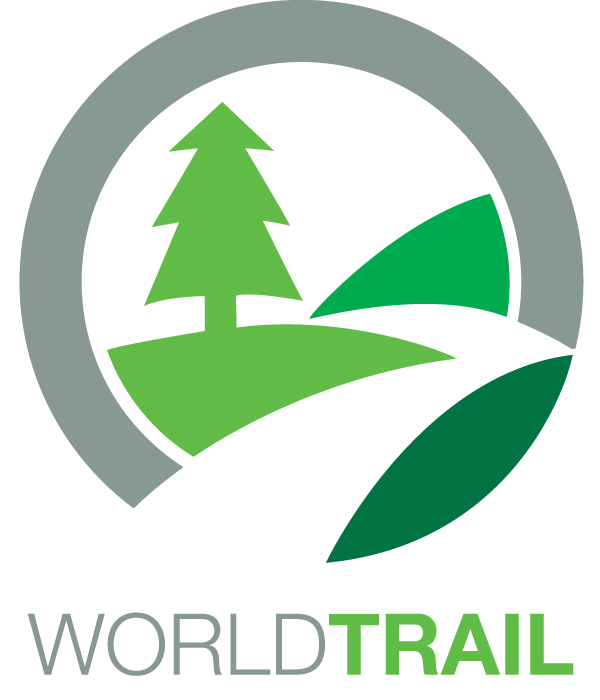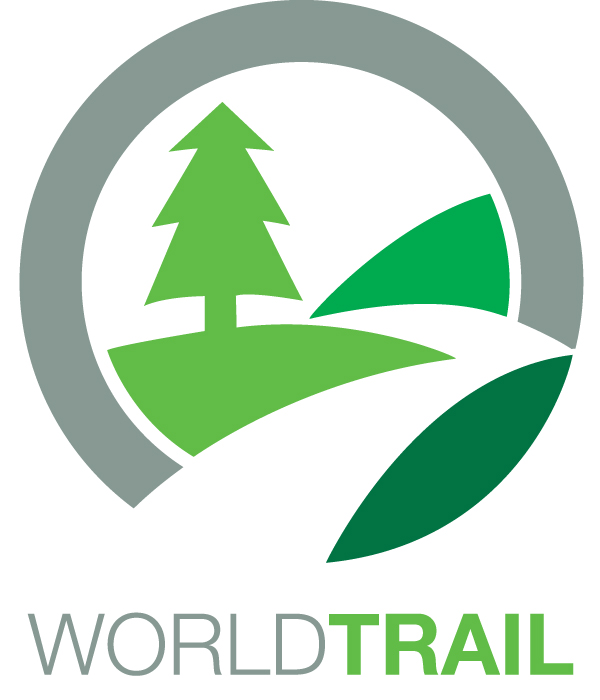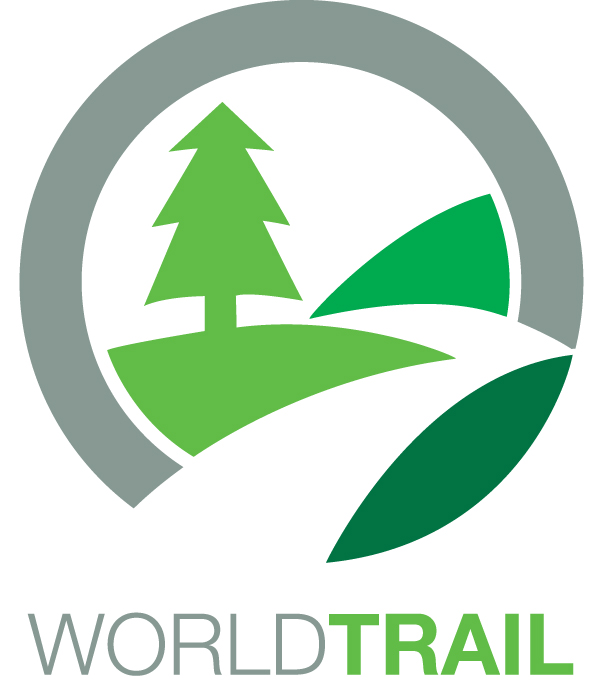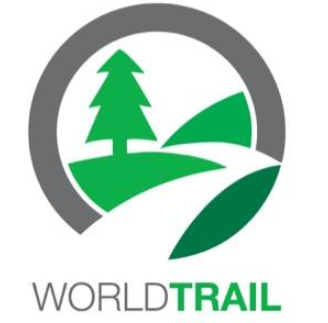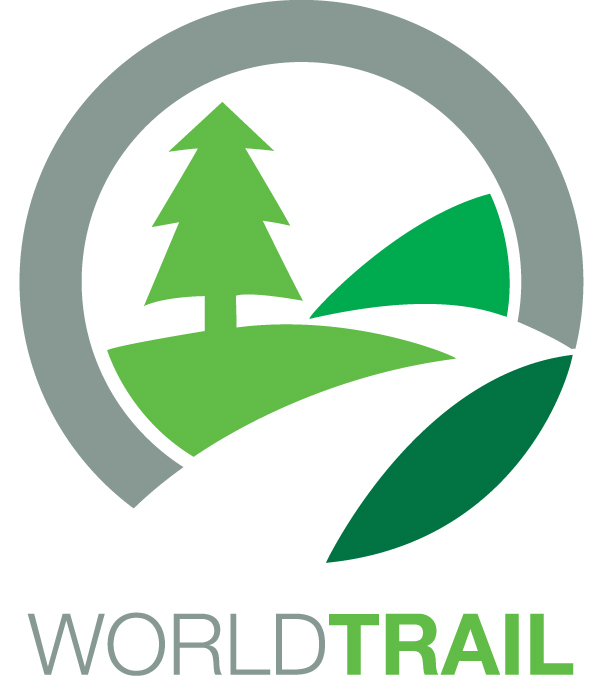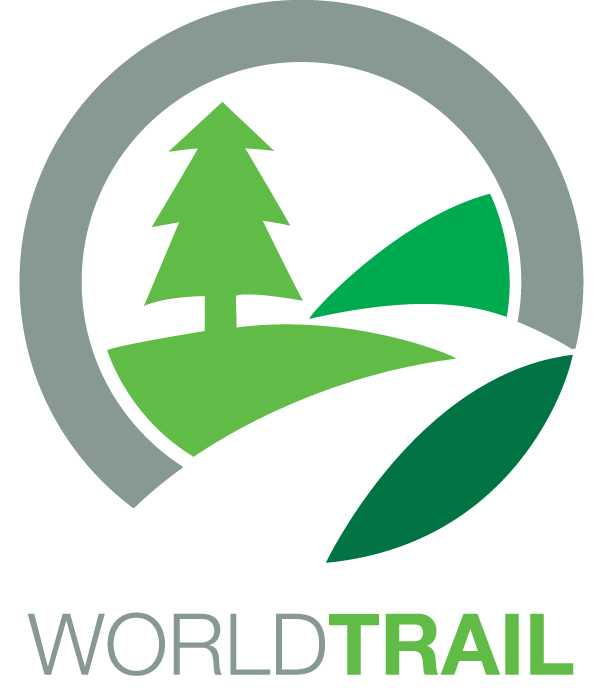Title Page
-
SWMS No
-
Conducted on
-
Prepared by
-
Location
My Company Details
-
Business Name:
-
Business Address:
-
Business Contact:
-
Business #:
-
Phone No:
SWMS APPROVAL
-
SWMS APPROVED BY: (Employer/PCBU/Director/Owner)
-
Date:
-
Name and Signature of person responsible for ensuring compliance with SWMS:
-
Person/s Responsible for Reviewing the SWMS:
-
SWMS amendments must be approved by
Person
-
Name and Signature:
-
ALL PERSONS INVOLVED IN TASK MUST HAVE THIS SWMS COMMUNICATED TO THEM PRIOR TO WORK COMMENCING:
- Daily Tool Box Talks will be undertaken to identify, control and communicate additional site hazards.
- Work must cease immediately if incident or near miss occurs. SWMS must be amended in consultation with relevant persons.
- Amendments must be approved by nominated persons and communicated to all affected workers before work resumes.
- SWMS must be made available for inspection or review as required by WHS legislation.
- Record of SWMS must be kept as required by WHS legislation (until job is complete or for 2 years if involved in a notifiable incident). -
Select to acknowledge the above has been read and understood
Relevant Workers
Relevant workers must be consulted in the development, approval and communication of this SWMS.
-
Workers to be consulted:
Worker
-
Name and Signature:
-
Job Title:
Part 1: Principal Contractor Details
Principal Contractor details
-
The builder or the organisation you are working for.
-
Principal Contractor Company Name:
-
Project Name:
-
Job Address:
-
Project Manager Name and Signature:
-
Date SWMS provided to Principal Contractor:
High Risk Construction Work & PPE
SWMS Scope
-
This SWMS covers general hazards associated with the operation of a wood chipper.
-
Document # (eg. 10305-7):
High Risk Construction Work
-
This work activity involves the following "High Risk Construction Work" (select all that apply):
-
Confined Space
-
Mobile Plant
-
Demolition
-
Asbestos
-
Using explosives
-
Diving work
-
Artificial extremes of temperature
-
Tilt up or pre-cast concrete
-
Pressurised gas distribution mains or piping chemical, fuel or refrigerant lines energised electrical installations or services
-
Structures or buildings involving structural alterations or repairs that require temporary support to prevent collapse
-
Involves a risk of a person falling more than 2m, including work on telecommunications towers
-
Working at depths greater than 1.5 Metres, including tunnels or mines
-
Work in an area that may have a contaminated or flammable atmosphere
-
Work carried out adjacent to a road, railway or shipping lane, traffic corridor
-
In or near water or other liquid that involves risk of drowning
Risk Assessment Matrix & Controls
Personal Protective Equipment (PPE)
-
Ensure all PPE meets relevant Australian Standards. Inspect and replace PPE as needed.
-
Foot Protection
-
Hearing Protection
-
High Visibility
-
Head Protection
-
Eye Protection
-
Face Protection
-
Hand Protection
-
Breathing Protection
-
Protective Clothing
-
Fall Arrest
-
Sun Protection: Broad brimmed hat, UV rated clothing, SPF 30+ sunscreen, tinted safety glasses with adequate UV protection
-
Rings, watches, jewellery that may become entangled in machines must not be worn. Long and loose hair must be tied back.
JOB STEP 1. Planning & Preparation
Potential Hazard: Lack of consultation may lead to potential outcomes for personal injury, property damage &/or environmental incident.
-
-
Risk-Rating (IR) before control measures have been put in place
-
CONTROL MEASURES TO REDUCE RISK
· Liaise with Principal Contractor to establish the following on-site systems and procedures are in place and take note of:
o Health and Safety rules
o Induction for all workers - site specific and toolbox meetings
o Supervisory arrangements
o Communication arrangements
o All relevant workers are appraised for required competencies & for any pre-existing medical conditions if working in remote or isolated locations
o PPE required
o Site plans - showing no go zones for pedestrians
o Traffic Management Plan
o Exclusion Zones
o Risk Assessments
o SWMS and JSA's
o Injury reporting procedures
o Hazard reporting procedures.
· Obtain written consent from Coordinating Road Authority if applicable. Example:
o Minor works with no traffic impact = no consent required
o Where traffic is impacted, consent is required
o Roads other than freeways, minor works = no consent. -
Risk-Rating (RR) after control measures have been put in place
Potential Hazard: Remote and/or isolated work - personal Injury from delay in emergency assistance to remote workers
-
-
Risk-Rating (IR) before control measures have been put in place
-
CONTROL MEASURES TO REDUCE RISK
· A 'Buddy' system is utilised for high-risk tasks undertaken in remote locations or working in isolation
· A procedure is developed and in place for regular contact with people working remotely or in isolation, The procedure should identify:
o Travel itineraries, locations, scheduled contact persons and times
o Sufficient supplies of water, food, fuel & supplies needed
o An emergency response
o Appropriate Vehicles
o Safety equipment including first aid. -
Risk-Rating (RR) after control measures have been put in place
Potential Hazard: Outdoor work - exposure to disease, bites & stings from insects reptiles, hazardous plants etc.
-
-
Risk-Rating (IR) before control measures have been put in place
-
CONTROL MEASURES TO REDUCE RISK
· First Aid requirements:
o Provision of first aid equipment - adequate Bites/Stings First Aid kit is available
o Each worker must have access to the equipment
o Workers have access to facilities for the administration of first aid
o Ensure vaccinations (such as Hepatitis B, tetanus etc.) are offered for staff
o Persons with known allergic responses should consult a doctor and ensure appropriate kit is available at all times (Including EpiPen - in date). -
Risk-Rating (RR) after control measures have been put in place
-
Person responsible to implement control measures:
JOB STEP 2. Training and Capabilities
Potential Hazard: Lack of training or the assessment of capability may lead to personal injury, property damage &/or environmental incident.
-
-
Risk-Rating before control measures have been implemented
-
CONTROL MEASURES TO REDUCE RISK
* Check workers are in fit condition to work i.e. no signs of fatigue, alcohol or drugs.
· Ensure all persons entering site have a General Construction Induction Card (white card).
· Operator has appropriate training for operation of the chipper
· Additional Training and accreditation - All people working adjacent to traffic must be appropriately trained
· Ensure all relevant workers have undertaken training and/or received instruction in the use of control measures. Include:
o Reporting procedures for incidents
o Manufacturer's manual available
o Correct use of equipment including selecting, fitting, use, care of and maintenance
o Use of supervision where required (e.g. new starters or new equipment)
o Ensure supervisors, foremen etc. are suitably experienced in the type work to be conducted
o An adequate number of workers are trained to administer first aid or workers have access to an adequate number of people who have been trained to administer first aid
o All workers are trained in this SWMS. -
Risk-Rating (RR) after control measures have been put in place
-
Person responsible to implement control measures:
JOB STEP 3. Assess onsite conditions
Potential Hazard: Struck by mobile plant / working adjacent to roads
-
-
Risk-Rating before control measures have been implemented
-
CONTROL MEASURES TO REDUCE RISK
· Check constantly for changing hazards while working and monitor work position at all times. Ensure:
o High visibility clothing worn at all times
o Do not stand behind reversing vehicles
o Allow sufficient distance from chipper during operation (allow sufficient room for equipment failure - such as arm/boom failure or chipper rollover)
o Do not enter established "no go zones" for pedestrians
o Alertness at all times. Listen for:
" Reversing alarms/beepers
" Calls from Plant Operators
o Safety/warning signs, Spotters, traffic barriers etc. must be obeyed as required
o Work positions should be in clear sight of other plant operators
o Follow traffic management plan requirements.
NOTE: Some traffic management plans may say that pedestrians have right-of-way. Never assume this. Make visual and verbal contact with plant operator as required. -
Risk-Rating (RR) after control measures have been put in place
Potential Hazard: Lack of a clear assessment may lead to personal injury, property damage &/or environmental incident.
-
-
Risk-Rating before control measures have been implemented
-
CONTROL MEASURES TO REDUCE RISK
· Assess conditions at site on arrival. Ensure:
o Ensure site-specific induction is undertaken (include location of amenities, first aid facilities, emergency plans and evacuation points, incident reporting, communication, contact persons etc.)
o Assess mobile phone reception (alternative emergency communications procedures in place if no reception)
o Work site is exactly as detailed in Terms of Agreement or contract
o Suitable weather conditions, do not work outside in low visibility, heavy rain, high winds etc.
o Suitable access for all equipment required
o Suitable ground / track conditions for operation of equipment
o Suitable lighting, including night-works
o Take note of other plant movement.
· Conduct risk assessment to identify potential hazards such as:
o Weather conditions (do not operate in rain/wet conditions)
o Ground condition (rocks, uneven, muddy/slippery etc.)
o No go zones (barricade steep slopes, uneven ground, do not work within 3m of power lines (ensure signage in place, use spotters if required)
o Traffic management plan (include pedestrians and passing vehicles if near roads)
o Emergency plans. -
Risk-Rating (RR) after control measures have been put in place
Potential Hazard: Environmental conditions
-
-
Risk-Rating before control measures have been implemented
-
CONTROL MEASURES TO REDUCE RISK
· Appropriate protective clothing
· Wear hand protection
· Wear non-slip footwear (slippery surfaces)
· Adequate breaks
· Check weather conditions - Do not work in extreme conditions
· Cold:
o Encourage workers to have adequate warm drinks
o Access to warm shelter during breaks
· Heat:
o Sun brim on hard hat
o Safety glasses - UV Rated
o Use 30+ sunscreen on exposed skin areas
o Adequate drinking water. -
Risk-Rating (RR) after control measures have been put in place
-
Person responsible to implement control measures:
JOB STEP 4. Delivery and removal of chipper
Potential Hazard: Crush Injuries Entrapment
-
-
Risk-Rating before control measures have been implemented
-
CONTROL MEASURES TO REDUCE RISK.
Coupling:
· Follow manufacturer's instructions for truck/chipper combination
· Ensure no persons in vicinity
· If using Spotters, ensure they do not stand between truck and chipper - maintain visual contact at all times
· Reverse slowly
· Attach airlines and electrical cables in correct positions -ensure secured
· Check Brake /indicator lights functions
Safety Chains:
· Comply with Australian Standards
· Rated for load mass
· Short as possible and connected to tow vehicle.
Uncoupling:
· Ensure suitable location and terrain. No slopes
· Chock wheels or ensure chipper will not move /slide
· Apply the chipper parking brake
· Wind down dolly legs (if used on chipper model)
· Ensure brakes are engaged before uncoupling pneumatic and/or hydraulic and electric lines
· Carefully pull away from chipper
· Check chipper is fully supported / stable before leaving -
Risk-Rating (RR) after control measures have been put in place
Potential Hazard: Truck / chipper rollover
-
-
Risk-Rating before control measures have been implemented
-
CONTROL MEASURES TO REDUCE RISK.
· Wear seatbelt at all times when operating truck and any mobile plant.
· Unload at designated delivery site, which has been approved by the Principal Contractor. Ensure:
o Ground is stable, soil is compacted sufficiently
o Gradient/slope within safe limits - including entire travel distance if dumping whilst moving
o Tyre pressure is equal on both sides of vehicle
o Ensure truck does not operate or travel near the edge of an excavation or other drop off unless the ground support system installed has been designed by a competent person to carry such loads
o Ensure truck stay on existing access tracks, and within construction boundaries
o Do not turn or unload on slopes
o Do not overload/exceed capabilities
o Be familiar with width of equipment to maintain safe clearance near fences, boundaries or other obstacles.
* Do not attempt to load/unload on soft, uneven ground, downgrades or on cross falls (higher centre of gravity).
* Never use mobile plant to tow other plant on or off trucks or trailers (winch or drive). -
Risk-Rating (RR) after control measures have been put in place
Potential Hazard: Adjacent to road & public safety
-
-
Risk-Rating before control measures have been implemented
-
CONTROL MEASURES TO REDUCE RISK.
· Park working vehicle in driveway or allocated parking to avoid travelling across roads when delivery working equipment
· If setting up roadside - comply with local laws and permits
· Barricading controls shall be implemented and authorised as part of the safe work system to protect persons from hazards such as:
o Being struck by projectiles
o Being struck by moving plant
o Exposure to hazardous chemicals
· Ensure barricade, regardless of type, is minimum 900 mm high
o Barrier mesh and bunting flags may be used where a solid barricade is not required
· Ensure that the appropriate barricading tape and signage is used to delineate work areas e.g. Caution or Danger. -
Risk-Rating (RR) after control measures have been put in place
Potential Hazard: Contact with hazardous chemicals / substances
-
-
Risk-Rating before control measures have been implemented
-
CONTROL MEASURES TO REDUCE RISK.
· Chemicals must be transported in approved, sealed containers
· Ensure chemical containers are adequately secured in the vehicle tray / back
· Do not transport chemicals in vehicle cabins
· Fuel:
o Least amount carried at all times
o Placarding requirements for transporting fuel in containers
o Fuel transported in suitable containers
o Stored outside of cabin / sufficient ventilation
o Fire protection equipment (fire extinguisher) available. -
Risk-Rating (RR) after control measures have been put in place
Potential Hazard: Falling objects
-
-
Risk-Rating before control measures have been implemented
-
CONTROL MEASURES TO REDUCE RISK.
· Do not leave any loose items in cabin
· Ensure all fittings and attachments are secure before loading /unloading chipper. -
Risk-Rating (RR) after control measures have been put in place
Potential Hazard: Slips, trips and falls
-
-
Risk-Rating before control measures have been implemented
-
CONTROL MEASURES TO REDUCE RISK.
· Do not exit cab while loading/unloading to and from the vehicle
· Do not jump from cabin or vehicle tray
· Wear non slip footwear
· Only access tray of vehicle using manufacturer's access points. -
Risk-Rating (RR) after control measures have been put in place
-
Person responsible to implement control measures:
JOB STEP 5. Prepare intended work site
Potential Hazard: Contact with passing vehicles when mowing roadside
-
-
Risk-Rating before control measures have been implemented
-
CONTROL MEASURES TO REDUCE RISK
· Develop site-specific traffic management plan for roadside works (including barricades, warning signs, witches hats, high visibility clothing etc.).
· Ensure traffic management plan applicable to type of work
· Examples are as follows:
o Freeway 100km/h, worksite between 1.2m and 9m = High Risk. Traffic control devices required (such as vehicle-mounted attenuators, lane closure adjacent to road works, reduced speed signs, flashing lights
o Local traffic road 60km/h, worksite 1.2m = High Risk. See above controls
o Works within 1.2m of any road = High Risk
o Works further than 9m = Low risk. Lesser controls may be required
· For short term/mobile works, ensure following:
o Advance warning signs (such as "worker symbolic signs") sufficient distance before works
o Transition area (such as lane tapers - merging into a single lane), place cones approximately 2 times the approaching speed limit (in metres). Example: Road speed is 80km/h, tapering should begin at least 160m. Cones must be placed in conspicuous location, evenly spaced - not more than 4m apart and at suitable diagonal into lane
o Clearance area (where speed limit is more than 60km/h). Approx. 20-30m - no parked vehicles, plant or workers
o Work Area (as required)
o Termination (not required for short-term or mobile works)
· Ensure suitable speed restrictions as required. Examples for short term works:
o Between 1.2m-3m of a local road, speed limit of 60km/h and barrier in place - no speed restrictions required. Where no barrier in place - reduce speed to 40km/h
o For a freeway where a barrier is in place (within 1.2m-3m), reduce speed to 80km/h. Without barrier = 40km/h
o Between 9-12m, no barrier = 80km/h on freeway
o 12m+ = no speed restrictions
· Ensure all signs are placed in conspicuous areas where motorists can easily read them
· Ensure all relevant workers wear suitable Hi visibility/reflective vest. -
Risk-Rating (RR) after control measures have been put in place
Potential Hazard: Public safety
-
-
Risk-Rating before control measures have been implemented
-
CONTROL MEASURES TO REDUCE RISK
Sites where public may be present
· Provide and maintain suitable access/egress for pedestrians where required. Include:
o Physical barriers to ensure persons do not enter within 5m of work site
o Caution signs
o Stop-go baton operators
· Establish a clearance zone for work area (Examples: bollards, caution signs, tape etc.) Ensure safe travel path when re-directing pedestrians. Keep pedestrians and vehicles separated. -
Risk-Rating (RR) after control measures have been put in place
Potential Hazard: Fire
-
-
CONTROL MEASURES TO REDUCE RISK
· Ensure a regularly maintained fire extinguisher is available at all times. -
Risk-Rating before control measures have been implemented
-
Risk-Rating (RR) after control measures have been put in place
Potential Hazard: Slips, trips and falls
-
-
CONTROL MEASURES TO REDUCE RISK
· Check for pits, gradients, uneven terrain
· Check covers are in place over/around any penetrations/openings prior to commencing work. -
Risk-Rating before control measures have been implemented
-
Risk-Rating (RR) after control measures have been put in place
Potential Hazard: Projectiles
-
-
CONTROL MEASURES TO REDUCE RISK
· Clear stones, sticks, glass or other solid objects from area
· Ensure persons and pets are clear of projectiles or blown materials. -
Risk-Rating before control measures have been implemented
-
Risk-Rating (RR) after control measures have been put in place
-
Person responsible to implement control measures:
JOB STEP 6. Pre start check
Potential Hazard: Lack of training or the assessment of capability may lead to personal injury, property damage &/or environmental incident.
-
-
Risk-Rating before control measures have been implemented
-
CONTROL MEASURES TO REDUCE RISK
· Before working with the Chipper, check it has been properly converted from any transport mode
· Where appropriate, if the chipper is detached from the tow vehicle, apply the handbrake and, if necessary, chock the wheels
· Ensure any fitted safety devices or equipment are in good condition and functional during pre-start check. Chipper safety devices are available to reduce the risk of "caught-in" or "struck-by" accidents. Some manufacturers have equipped chippers with one or more of these devices, including:
o Feed Control Bar
o Bottom Feed Stop Bar
o Panic Bar
o Emergency Pull Ropes
o Feed Tray Extensions
o Wooden Push Tools
o Flexible Rubber Curtain/Flaps
o Discharge Spout Deflector/Guard
o Chipper Hood Safety Latch
· Carry out Pre-start check as per manufacturer's operation manual. Check:
o In-feed guards are in place and in good condition
o Interlocked guards are working (if applicable)
o Emergency stops are present, undamaged and functional
o Hood latches, pins and hinges are not damaged/worn or cracked
o Hood is able to be locked closed
o Chutes are clear of obstacles
o Tyre pressure suitable
o Hydraulic hoses are not cracked, deformed
o No oil leaks
o Sufficient fuel/oil levels
o All controls are labelled and working
o Safety decals in place and legible
o Bolts are tight and secure
o Forward and reverse movement of feed rollers functional
· Disk chippers: Examine chipper disk for signs of welding and establish whether the thickness of metal ligament is less than 30mm (if so - consult with manufacturer). The disk has been known to disintegrate and be ejected during operations, causing fatalities
· Start chipper at lowest speed and listen for noises that indicate loose parts. If detected, do not use
· Do not use chipper if defects found or guards not in place/working. Take out of service and follow tag out/lock out procedures
· For chippers attached to a tractor and driven by a power takeoff (PTO) shaft, before starting ensure:
o The PTO shaft is fitted with a suitable guard that encloses the shaft along its full length from tractor to machine
o The guard is correctly fitted and in effective working order
o The PTO speed is suitable for the machine.
Note: Tractors should be operated as per the Tractor SWMS and the operational manual. -
Risk-Rating (RR) after control measures have been put in place
-
Person responsible to implement control measures:
JOB STEP 7. Chipper operation
Potential Hazard: Entrapment
-
-
Risk-Rating before control measures have been implemented
-
CONTROL MEASURES TO REDUCE RISK
· Follow manufacturer's instructions for start-up and operation
* Entrapment in any part of the Chipper could cause serious injury or death. It is extremely important that close physical contact with the machine whilst in operation is avoided at all times without fail
* Never allow anyone to sit, stand, or lean into the infeed hopper at any time. KEEP WELL CLEAR AND STAND TO THE SIDE. Failure to do so may easily result in serious injury or death
· Use speed (RPM) as directed by manufacturer. Do not exceed
· Always stop machine, wait for moving parts to stop and lock out power to chipper before removing any blockages
· NEVER climb or stand on chipper/in-feed. -
Risk-Rating (RR) after control measures have been put in place
Potential Hazard: Entanglement
-
-
Risk-Rating before control measures have been implemented
-
CONTROL MEASURES TO REDUCE RISK
· Ensure operator has:
o No loose clothing or jewellery, hair tied back
o Snug fitting PPE with no cuffs or strings
o Clothing tucked in where applicable
· Load materials from side of in-feed chute
· Do not stand in front during loading
· Place butt-end first. Push short stubs through with longer branches. Lay shorter branches of top of longer ones
· Do not place hands or body parts into in-feed chute
· Once in-feed grabs material, step back from chipper
· Do not use force to push materials through
· Be aware of different feed rates for different wood
· Rotate branches with strong bark slowly when feeding. This can prevent overheating of bearing as the bark can wrap around it
· Never lay vine type materials in front of the infeed hopper
· Always cut vine type materials into short lengths. Stop automatic feed system and runs short pieces of vine materials through the Chipper using manual start/stop controls and a wooden push stick. Be alert. -
Risk-Rating (RR) after control measures have been put in place
Potential Hazard: Slips, trips and falls
-
-
Risk-Rating before control measures have been implemented
-
CONTROL MEASURES TO REDUCE RISK
· The property owner, principal contractor, subcontractors and workers are responsible for housekeeping
· Check your path for obstacles when carrying loads
· Do not climb or jump over loose material
· Clean up workplaces and remove rubbish and obstructions regularly
· Do not store materials in walkways
· Assign dedicated storage areas that are separate to work areas
· Stack materials neatly. -
Risk-Rating (RR) after control measures have been put in place
Potential Hazard: Hazardous manual tasks - MSD
-
-
Risk-Rating before control measures have been implemented
-
CONTROL MEASURES TO REDUCE RISK
· Avoid over reaching
· Job rotation
· Avoid long periods of repetitive movements
· Avoid awkward and sustained positions
· Regular breaks. -
Risk-Rating (RR) after control measures have been put in place
Potential Hazard: Pedestrian and other worker safety
-
-
Risk-Rating before control measures have been implemented
-
CONTROL MEASURES TO REDUCE RISK
· Maintain awareness of persons entering operational zone and cease work immediately if incursion is uncontrolled
· Follow:
o Manufacturer's instructions
o Site safety rules
o Traffic control plan
· Ensure no persons or obstructions in vicinity before start-up
* Do not allow passengers on the chipper or any attachments. -
Risk-Rating (RR) after control measures have been put in place
Potential Hazard: Struck by flying / ejected materials
-
-
Risk-Rating before control measures have been implemented
-
CONTROL MEASURES TO REDUCE RISK
· Ensure eye protection is worn while chipping
· Ensure material to be chipped is clear of metal, stones, plastic, fauna, pests, diseases, rope or other contamination
· Ensure material of suitable size for chipper. De-limb/cut as required
· Do not load small twigs, leaves etc. into chipper, rake and bag separately. -
Risk-Rating (RR) after control measures have been put in place
Potential Hazard: Dust
-
-
Risk-Rating before control measures have been implemented
-
CONTROL MEASURES TO REDUCE RISK
· Ensure eye protection is worn while chipping
· Wear dust masks
· Ensure discharge chute pointed downwards (reduce dust). Clear away discharge regularly -
Risk-Rating (RR) after control measures have been put in place
Potential Hazard: Abrasions
-
-
Risk-Rating before control measures have been implemented
-
CONTROL MEASURES TO REDUCE RISK
· Wear hand and foot protection, long sleeves and pants throughout the chipping process. -
Risk-Rating (RR) after control measures have been put in place
Potential Hazard: Burns/fire
-
-
Risk-Rating before control measures have been implemented
-
CONTROL MEASURES TO REDUCE RISK
· Keep chipper free of any excess grease, oil and fuel accumulation
· Clean up spillage immediately
· Use only nonflammable solutions for cleaning the chipper or components
· Store rags and other combustible materials in a safe, fireproof location.
· Do not feed palm leaves into chipper. Bearing can overheat and cause fire or damage equipment. -
Risk-Rating (RR) after control measures have been put in place
Potential Hazard: Struck by chipper parts / chipper
-
-
Risk-Rating before control measures have been implemented
-
CONTROL MEASURES TO REDUCE RISK
· Before moving the Chipper:
o Stop the engine and remove the start/stop key
o Lock the chipping components
o Secure the infeed hopper and the chip discharge chute in the transport position
o Check the towing bracket, attach, then lift and secure the jockey wheel
o Connect the electrics and safety chain(s) to the towing vehicle
o Ensure the load is secure. -
Risk-Rating (RR) after control measures have been put in place
Potential Hazard: Hearing loss
-
-
Risk-Rating before control measures have been implemented
-
CONTROL MEASURES TO REDUCE RISK
· Wear hearing protection, ensure it is:
o Worn by all persons throughout the period of exposure to noise
o Suitable for the type of working environment and the work tasks
o Comfortable and correctly fitting for the worker
o Regularly inspected and maintained to ensure it remains in good, clean condition. -
Risk-Rating (RR) after control measures have been put in place
-
Person responsible to implement control measures:
JOB STEP 8. Refuelling on site
Potential Hazard: Fire / explosion
-
-
Risk-Rating before control measures have been implemented
-
CONTROL MEASURES TO REDUCE RISK
1. Shut off engine
2. Allow to cool before re-fueling if possible
3. Remove cap slowly
4. Use a fuel hose, pouring spout or funnel
5. Fill tank and wipe away excess
6. Ensure there is no over spill
7. Ensure cap has been secured and any vapour residue has been wiped away
8. Check for leaks.
o DO NOT smoke during re-fuelling
o Ensure re-fueling is undertaken in well-ventilated area, clear of ignition sources
o Material/Safety Data Sheets (M/SDS) for all fuel products on hand
o Follow manufacturer's manual/recommendations for re-fuelling
o Ensure fire extinguisher available and in date.
Diesel: Fire extinguisher - Water, foam, dry chemical powder, CO2
Unleaded petrol: Fire extinguisher - Dry chemical powder, foam, CO2. Never use water to extinguish an Unleaded Petrol fire. -
Risk-Rating (RR) after control measures have been put in place
Potential Hazard: Exposure to hazardous chemicals / substances / atmosphere
-
-
Risk-Rating before control measures have been implemented
-
CONTROL MEASURES TO REDUCE RISK
· Avoid breathing vapours or contact with fuel
· If clothing is splashed with fuel, change immediately
· Do not siphon or swallow fuel as this can be fatal
· Do not eat, drink or smoke during/after-handling fuel until hands are washed
· Shower and wash immediately after work
· Wash clothes in separate wash from other clothes
· Do not leave the engine running in closed areas. The exhaust fumes contain substances that are odourless but are fatally poisonous. -
Risk-Rating (RR) after control measures have been put in place
Potential Hazard: Environment incident
-
-
Risk-Rating before control measures have been implemented
-
CONTROL MEASURES TO REDUCE RISK
· Ensure training in emergency response for chemical spill. Emergency response -fuel spill:
1. Stop the source of the spill or leak or release:
a. If that is not possible & it is safe to do so - stop the spill or release from spreading
2. Turn off any ignition sources if safe to do so
3. Use gravel or other material to stop fuel entering drains/water courses
4. Clean up spill as required. -
Risk-Rating (RR) after control measures have been put in place
-
Person responsible to implement control measures:
Site specific hazards
-
Have you identified any further hazards on the job site?
Job Step
-
What job step does this hazard relate to?
-
Potential Hazard
-
Risk-Rating (IR) before control measures have been put in place<br>
Control Measures to Reduce Risk
-
Control measures used to reduce risk
-
Risk-Rating (RR) after control measures have been put in place.
-
Person responsible to implement control measures:
JOB STEP 9. On completion
Potential Hazard: Waste handling
-
-
Risk-Rating before control measures have been implemented
-
CONTROL MEASURES TO REDUCE RISK
· Dispose of all debris as required - not on neighboring property. -
Risk-Rating (RR) after control measures have been put in place
Potential Hazard: Environmental contaminants
-
-
Risk-Rating before control measures have been implemented
-
CONTROL MEASURES TO REDUCE RISK
· Ensure all equipment / chipper is washed free of dirt, vegetation, debris before leaving site
· Ensure any contaminated wastewater is captured as per Environment Laws
· Do not wash chipper where residue can enter and sensitive areas such as storm water drains and water-ways. -
Risk-Rating (RR) after control measures have been put in place
Potential Hazard: Public safety
-
-
Risk-Rating before control measures have been implemented
-
CONTROL MEASURES TO REDUCE RISK
· If acceptable, remove barricades or add barricades as appropriate. -
Risk-Rating (RR) after control measures have been put in place
-
Person responsible to implement control measures:
Emergency Response
-
Emergency Response - CALL 000 IMMEDIATELY.
-
If work is to be conducted on a construction site (or a site controlled by another Employer / PCBU) follow the site-specific Emergency Management Plan. Ensure:
· Adequate numbers of first aid trained staff are on site when working at heights occurs
· First aiders are trained and competent in managing injuries associated with demolition until emergency services arrive
· All rescue equipment is in good condition, available for use and in close proximity to the work site. -
Ensure workers have access to:
· First aid kit/supplies
· First Aid trained personnel familiar with Resuscitation and emergency response for electric shock
· M/SDS
· Communication devices (check mobile phones will have service in area)
· Suitable fire protection equipment.
Review & Monitor
Review & Monitor
-
To ensure controls are implemented and monitored effectively:
• Toolbox /pre-work meetings will be undertaken
• Relevant persons will be consulted on hazards and contents of SWMS, work plans and other applicable information
• Control measures will be monitored throughout works:
o Spot checks
o Consultation
o Scheduled audits
• Corrective actions will be recorded and rectified in a timely manner SWMS will be reviewed and updated accordingly (in consultation with relevant persons) -
Ensure all controls are reviewed as per the following:
• If controls fail to reduce risk adequately
• When changes to the workplace or work activity occur that create new / different risks where controls may no longer be effective
• New hazards identified
• After an incident involving work activities relevant to this SWMS
• During consultation with relevant persons indicate review is needed
• A Health and Safety Representative (HSR) requests a review in line with the requirements of the legislation. -
Review Number
- 1
- 2
- 3
- 4
- 5
- 6
- 7
- 8
- 9
- 10
-
Name & Initials
-
Date
Plant/Tools/Equipment Required For The Job
Plant/Tools/Equipment Required For The Job
-
Plant / Tools / Equipment are required to complete this job:
-
Plant / tools / equipment required:
Equipment / Tools / Plant
-
Make & Model
-
Photo of Equipment / Tools / Plant
Relevant Legislation & Codes of Practice
Country/State/Territory Specific References
-
Below you can add in relevant Legislation & Code of Practice references for your industry.
To help, SafetyCulture has put together a reference list which you can view by clicking the link below.
https://www.safetyculture.com.au/safe-work-method-statements-swms/1-ohs-legislation-and-codes-of-practice-reference-list-31105-1/ -
Select to manually add specific references where relevant
-
Country/State/Territory Specific References:
Part 2: Worker Sign Off & Licences/Competencies/Qualifications
Overall Risk Rating After Controls
-
Select Risk Rating
Worker Sign-off
-
This SWMS has been developed in consultation and cooperation with employee/workers and relevant Employer/Persons Conducting Business or Undertaking (PCBU). I have read the above SWMS and I understand its contents. I confirm that I have the skills and training, including relevant certification to conduct the task as described. I agree to comply with safety requirements within this SWMS including risk control measures, safe work instructions and PPE described.
Employee
-
Employee/Worker Name and Signature:
-
Job Role/Position
-
Employer/PCBU/Supervisor:
Licences/Competencies/Qualifications
-
Has the employee/worker completed any training or hold the licences required to complete this task?
-
Licence to Perform High Risk Work (operating certain plant, equipment)
-
Licence details
-
Photo of relevant licences
-
TAFE or other recognised training organisation
-
Licence details
-
Photo of relevant licences
-
Construction Induction Card (or equivalent)
-
Licence details
-
Photo of relevant licences
-
PPE
-
Licence details
-
Photo of relevant licences
-
Traffic Management Plan
-
Plan Details
-
Relevant photos
-
Other
-
Licences/training
Licences / Training
-
Licence details
-
Photo of relevant licences
